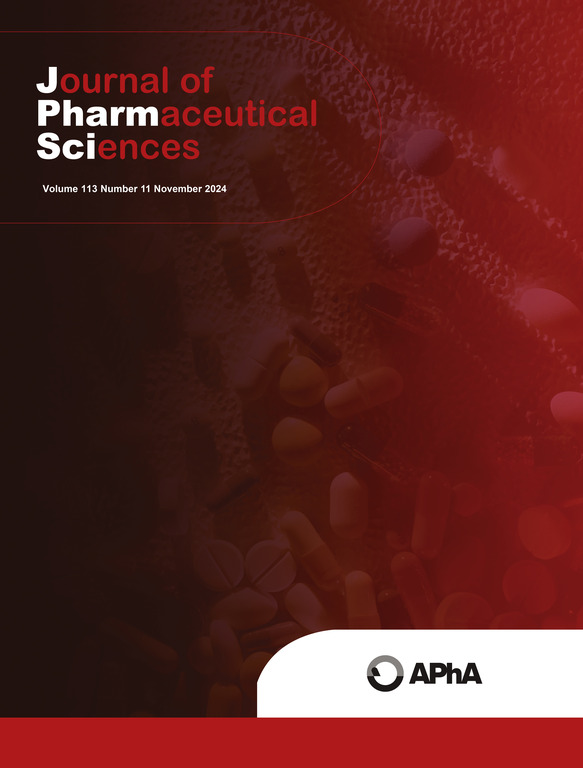Fabrication and optimization of valsartan-loaded transbilosomes for management of diabetes mellitus-accelerated stroke
IF 3.7
3区 医学
Q2 CHEMISTRY, MEDICINAL
引用次数: 0
Abstract
Stroke is the second leading cause of death, particularly among diabetic patients. Valsartan (VST) has the potential to alleviate and prevent strokes due to its antioxidant properties. However, the poor solubility and low bioavailability of VST limit its effectiveness. Therefore, this study aimed to develop a nasal formulation of VST-loaded transbilosomes (VLT) to enhance VST’s efficacy, sustainability, bioavailability, and targeting as a treatment for diabetes mellitus-accelerated stroke (DMAS). The Box-Behnken design was employed for the formulation development and optimization of VLT. An experimental rat model of DMAS was utilized for the in vivo study. The optimal VLT formulation consisted of phospholipid (262.14 mg), Span 60 (20 mg), and sodium deoxycholate (10 mg). When compared to free VST, the optimal VLT formulation improved sustainability, permeability, bioavailability, and targeting of VST by 68.69 %, 7.17-fold, 6.15-fold, and 3.98-fold, respectively. Compared with the positive DMAS control, the optimal VLT group enhanced the neurobehavioral activity of DMAS rats in terms of flexion, spontaneous motor activity, time spent in the target quadrant, and grip strength by 68.52 %, 51.96 %, 83.64 %, and 2.43-fold, respectively. The histopathological study confirmed these results. In conclusion, these findings suggest that the nasal VLT formulation could be a promising therapy to prevent DMAS.

装载缬沙坦的跨胆囊体用于糖尿病加速脑卒中治疗的制备和优化。
中风是导致死亡的第二大原因,尤其是在糖尿病患者中。缬沙坦(VST)由于其抗氧化特性,具有缓解和预防中风的潜力。然而,VST溶解性差,生物利用度低,限制了其有效性。因此,本研究旨在开发一种载VST的跨胆囊体(VLT)鼻腔制剂,以提高VST作为糖尿病加速脑卒中(DMAS)治疗的有效性、可持续性、生物利用度和靶向性。采用Box-Behnken设计进行VLT的配方开发和优化。采用DMAS实验大鼠模型进行体内研究。最佳VLT配方为磷脂(262.14 mg)、Span 60 (20 mg)、脱氧胆酸钠(10 mg)。与游离VST相比,优化后的VLT配方可将VST的可持续性、渗透性、生物利用度和靶向性分别提高68.69%、7.17倍、6.15倍和3.98倍。与DMAS阳性对照组相比,最佳VLT组DMAS大鼠的神经行为活动在屈曲、自发运动活动、目标象限停留时间和握力方面分别提高了68.52%、51.96%、83.64%和2.43倍。组织病理学研究证实了这些结果。总之,这些发现表明,鼻用VLT制剂可能是预防DMAS的一种有希望的治疗方法。
本文章由计算机程序翻译,如有差异,请以英文原文为准。
求助全文
约1分钟内获得全文
求助全文
来源期刊
CiteScore
7.30
自引率
13.20%
发文量
367
审稿时长
33 days
期刊介绍:
The Journal of Pharmaceutical Sciences will publish original research papers, original research notes, invited topical reviews (including Minireviews), and editorial commentary and news. The area of focus shall be concepts in basic pharmaceutical science and such topics as chemical processing of pharmaceuticals, including crystallization, lyophilization, chemical stability of drugs, pharmacokinetics, biopharmaceutics, pharmacodynamics, pro-drug developments, metabolic disposition of bioactive agents, dosage form design, protein-peptide chemistry and biotechnology specifically as these relate to pharmaceutical technology, and targeted drug delivery.

 求助内容:
求助内容: 应助结果提醒方式:
应助结果提醒方式:


